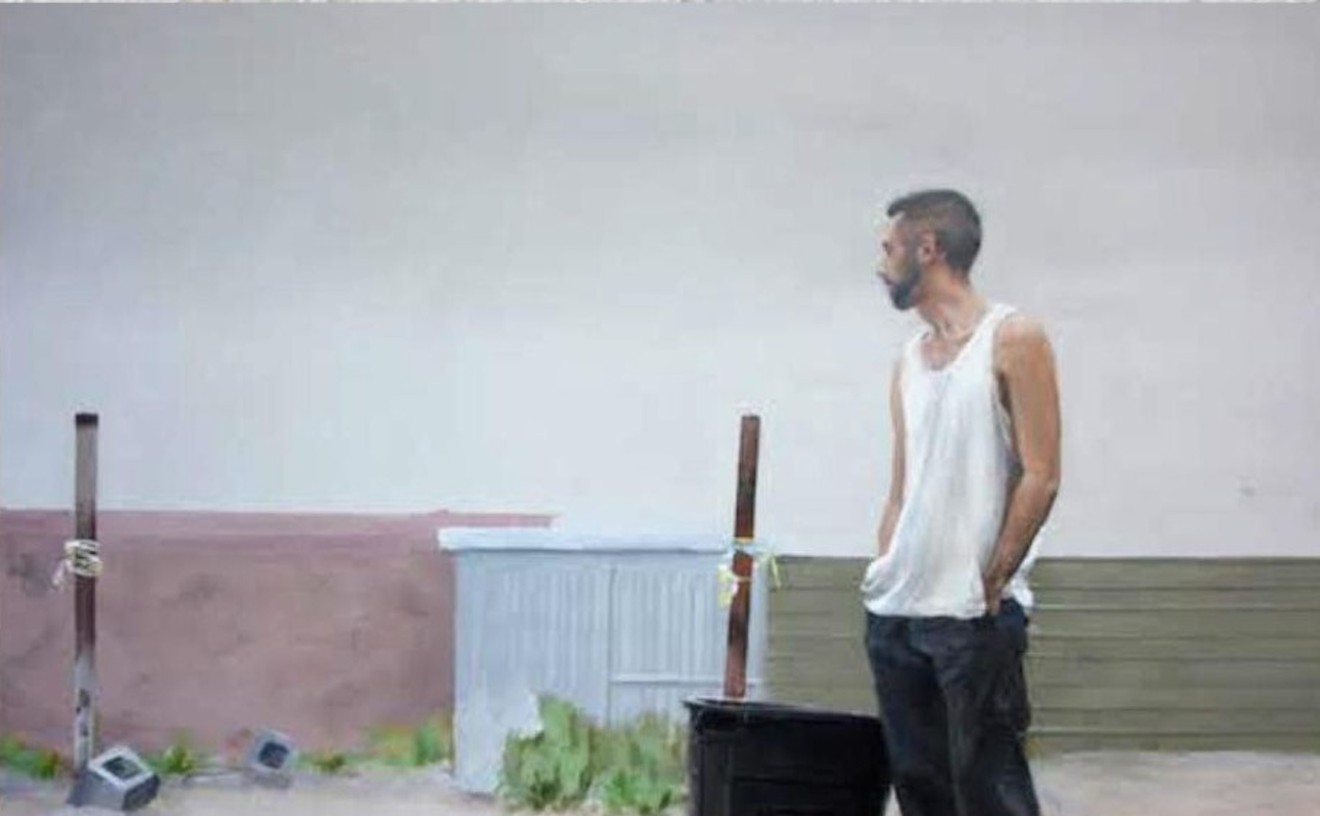For Phoenix-based artists Beatrice Moore and Bob Adams, the tradition of piñata-making is a strange melding of popular culture and ritual -- a combination that makes it a perfect target for satire. Moore's Stop N' Look Gallery -- actually a series of storefront windows in front of her studio on the always entertaining Grand Avenue -- has been transformed by the two artists into "Beatrice and Bob's Piñata Factory," and the result is something along the lines of Rocky Horror meets Saturday morning cartoon time meets Fritz the Cat.
That's right, no run-of-the-mill cartoon character or smiling donkey piñata here; instead, how about a two-headed Santa on the body of a giraffe? Or, just maybe Junior and the rest of the partygoers would love to smash to pieces a polka-dot witch with orange arms extended, each grasping a head of one of Donald's nephews, while riding Piglet from Winnie-the-Pooh, who, armed with a fiery red and orange member, is sharing the sexual experience with a devil-headed armless guy who is somehow tucked neatly between the two.
"We had fun being a little naughty," says Adams, who has used popular-culture-styled materials in his artwork throughout his career. "It's a little strange, though, when you're lopping off a breast, or inserting a Picachu through someone else's midsection. It was like Dr. Frankenstein, in an eerie way."
Despite its popularity in Mexico and the Southwest, the piñata is actually an Italian tradition that found its way to Spain in the 14th century before being carried over to Mexico with the Augustinian missionaries about a hundred years later.
"It was originally a teaching tool," says Santos Vega, coordinator of community arts and research for the Institute for Hispanic Studies at Arizona State University. "The missionaries would use the piñatas -- which then were clay pots -- to teach Christianity to the native peoples of Mexico."
According to Vega, the little game was used to teach such concepts as dealing with the mysteries that life offers and confronting risks using the power of the church.
"You're blindfolded and disoriented, so what you have to fight with is faith and hope," says Vega. "And when you achieve success, you share it with everyone else, which is the charity."
While Adams' and Moore's newly configured piñatas are more about general laughs than anything else, they do touch on ideas of sexuality, superstition, violence and passion that are found in Latin cultures. One includes a giant head of the Tasmanian devil, the body of some Disney movie princess, a boy urinating a steady stream of yellow papier-mâché, a three-headed dog with a unicorn horn and a strange blue alien/insect devil head. Another uses various parts of Blue's Clues characters, gypsies, a monkey, a lion and a chicken head to create some otherworldly monster of Biblical wrath set to snatch up misbehaving children.
"It felt sacrilegious at times," says Moore, who has been buying up buildings in the area and renting them as artists' studios after getting kicked out of her first studio, the old La Amapola Bar, to make room for America West Arena. "But the piñatas we used are actually pretty neat creatures; there's something about them, a certain level of sophistication, where the creators were able to get so much emotion out of a basic, simple face. They have a genuine, primitive quality about them."
To complete the project, Moore became well-versed in the various piñata shops and factories around town and even traveled to Nogales to find others. To her, the styles of the Mexican piñatas and the American ones are quite different.
"The ones you find in Phoenix are just generally television-cartoon characters -- the Power Puff girls, Pokémon, Sesame Street -- or circus and zoo animals," says Moore. "But in Nogales, I found more simple ones like a priest or a donkey. And some are tiny. I found a couple that were no more than six inches high. I became quite an expert on piñata-making after a while."
Moore has lived in the space on Grand Avenue for more than six years now. The gallery is geared toward the majority of the neighborhood's residents, without cars, who tend to walk to work, to school and to the store. The area is also home to a large number of transients who seem to find the piñatas entertaining as well.
"This homeless guy stopped me on the street and said, 'Are you the one who did those?' And when I told him yes he said, 'Wow, you did a really nice job.' And, though we had some that were hanging on the outside of the store that were vandalized, you really can't blame them. I mean what else are you supposed to do to a piñata than smash it into bits?"










